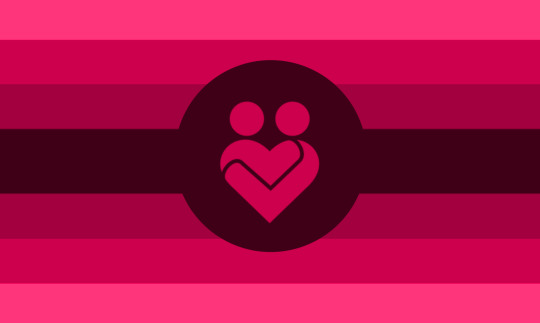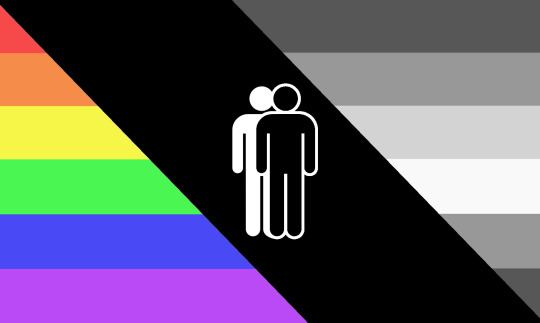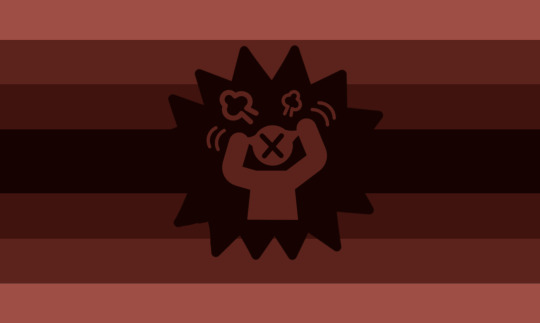Text
Did we just make a whole new fantasy-spec disorder? Yes.
Fantasy Identity Disorder, also known as FID, is a complex psychological condition that manifests as a profound and persistent disconnection between an individual's sense of self and their surrounding reality. Unlike traditional dissociative disorders, FID specifically revolves around the formation and intense attachment to a vivid, elaborate fantasy identity that becomes inseparable from the person's perception of themselves.
People affected by FID often exhibit a deep-rooted desire to live in a world of their own creation, where they assume a distinct alter ego or adopt a fantastical persona. This alternate identity is meticulously constructed, complete with a unique backstory, characteristics, and even supernatural abilities or traits. It serves as a refuge from the complexities and challenges of the real world, allowing individuals to find solace, purpose, and a sense of control within their imaginative realm.
The symptoms of FID can vary in intensity and may include persistent daydreaming, a preoccupation with the fantasy identity, difficulty differentiating between fantasy and reality, and a tendency to withdraw from social interactions. Individuals with FID may spend substantial amounts of time immersed in their fantasy world, engaging in elaborate rituals or role-playing activities that reinforce their chosen identity.
Fantasy Identity Disorder can have a profound impact on various aspects of a person's life. Relationships may be strained, as the individual struggles to balance their real-world obligations with the demands of their fantasy existence. Occupational functioning may be impaired, as the desire to live within the realm of their alter ego conflicts with the requirements of professional life. Additionally, individuals with FID may experience distress and a sense of loss when confronted with the limitations of their real-world circumstances, leading to emotional instability and a yearning to escape into their fantasy world.
Possible causes of FID include:
Childhood trauma or adverse experiences: Early childhood trauma, such as abuse, neglect, or significant disruptions in attachment, can sometimes lead individuals to develop FID as a coping mechanism. Creating a vivid fantasy identity may serve as a means of escape or as a way to regain a sense of control and agency in a world that feels unsafe or unpredictable.
Personality traits and predispositions: Certain personality traits, such as a strong inclination towards imaginative thinking, a high need for escapism, or a tendency towards dissociation, may make individuals more susceptible to developing FID. These traits could contribute to a heightened desire for an alternate reality in which they can freely explore their fantasies.
Social isolation or unfulfilled aspirations: Feelings of social isolation, a lack of belonging, or unfulfilled aspirations in the real world might prompt individuals to seek solace in their fantasies. FID could provide a way to compensate for the perceived deficiencies or unmet desires, offering a sense of purpose and fulfillment that may be lacking in their actual lives.
Media influence and immersion: Exposure to immersive media such as books, movies, video games, or online communities centered around fantasy worlds can play a role in the development of FID. Intense engagement with these fictional realms can blur the line between reality and fantasy, leading individuals to adopt and embody elements of the characters or worlds they admire.
Neurological or cognitive factors: There may be underlying neurological or cognitive processes that contribute to the development of FID. These could involve alterations in self-perception, imagination, or the integration of sensory information, although further research is needed to fully understand these potential connections.
The diagnostic criteria for Fantasy Identity Disorder are as follows:
Persistent preoccupation with a fantasy identity: The individual displays a pervasive and enduring preoccupation with a self-created fantasy identity, often exhibiting an intense attachment to this alternate persona. The fantasy identity is consistently present in their thoughts, desires, and actions.
Impaired differentiation between fantasy and reality: The individual struggles to differentiate between the fantasy identity and their actual identity, frequently blurring the boundaries between the two. This may result in difficulty distinguishing real-world experiences from events and circumstances within their imaginative realm.
Distress or impairment in functioning: The preoccupation with the fantasy identity causes significant distress or impairment in various aspects of the individual's life, including relationships, occupational functioning, or overall well-being. The person's engagement with the fantasy world interferes with their ability to fulfill real-world responsibilities and engage in daily activities.
Escape or avoidance behavior: The individual utilizes the fantasy identity as a means of escape or avoidance from real-world challenges, stressors, or emotional pain. They may actively seek opportunities to engage in fantasy-related activities, rituals, or role-playing to withdraw from or minimize their involvement in reality.
Significant duration: The symptoms of FID persist over a substantial period, typically for six months or more. The individual's engagement with the fantasy identity is not transient or temporary but remains a consistent and prominent aspect of their psychological landscape.
FID may be considered a form of disordered plurality, though this should be assessed by the specific individual(s) with the disorder.
48 notes
·
View notes
Text
Fantasychosis
A disorder that lies somewhere between psychosis and maladaptive daydreaming or other fantasy-based disorders.
Intentionally left vague. Name by ChatGPT. Based on our own experiences.
Feel free to make a flag if you want, I guess? We would, but we're suffering creative burnout and it doesn't really need one.
40 notes
·
View notes
Text
SALT ADDICTION DISORDER (SADTD)

Salt Addiction disorder is the addiction to eating salt, be it on it's own, or with foods. Folkel might add lots of salt on their foods, eat food with lots of salt on them or that have a strong salt taste to them.
17 notes
·
View notes
Text
Not my coins.
The below MUDs were coined by neuron-transid, I found archived here, here and here. Also yo can find more terms from this account here. I am reposting them so others can access them easier. If the original coiner asks me to take this down I will. I may of reposted some of these before(I remember doing so) but if I did, I forgot to archive it so here they are again.

post sexual fearful aggression disorder (PSFAD)
a medically unrecognized disorder where a person becomes extremely aggressive towards a sexual partner after sexual activities due to illogical fear or terror
symptoms may include:
extreme fear or terror after intercourse
yelling at, harming or otherwise threatening sexual partners
pain or discomfort during intercourse
pain in the genitals outside of sexual activity
amnesia towards the aggression and/or events prior
this disorder often comes after trauma, but not always. this disorder can be linked to plurality, and can co-exist with a system member causing the aggression/amnesia.

recurring punctual amnesia (RCPA)
a medically unrecognized disorder where a person has an episode of amnesia at a specific time, with it always occurring, regardless of circumstances.
examples of the time loss include:
a specific hour every day
a day of the week
a date/week/month of the year
a specific holiday
the list above is not exhaustive. amnesiac episodes are not associated with changes in behavior or identity. this disorder is often preceded by trauma, although it doesn't have to be.

obsessional force split and expand system disorder (OFSaESD): a medically unrecognized disorder involving a system or system member obsessing over being a larger system. this disorder has three criteria.
criteria a includes (must have at least one of the following, or something similar) :
dysphoric feelings towards not having a large enough system
feeling incomplete
feeling a need to have more system members
thinking about potential new members on a regular basis
criteria b includes (must have at least one of the following, or something similar) :
using tulpamancy, soulbonding, or other purposeful methods to acquire more system members
engaging in religious/spiritual activities with the main goal to gain more system members
stressing oneself/selves out to cause splits
putting oneself/selves in dangerous situations to try to force a split
criteria c must be completely met:
the system/system member experiences distress due to these symptoms
there is not another disorder that would explain the symptoms better
35 notes
·
View notes
Text
solipsism disorder(SoD)
this disorder is inclusive to transabled people!! you can absolutely be trans- this :)
(solipsism is the belief that only your consciousness is sure to exist and that there is no way to prove that others are real)
solipsism disorder can only be diagnosed if the person is experiencing distress from their belief. if the belief of solipsism is not distressing and does not create any impairment then a diagnosis should not be assigned.
this can be caused by delusions, psychosis, derealization/dissociation, or other neurodivergence, or it can have no cause at all!
the person does not have to hold this belief fully(meaning it can just be a doubt or partial belief) or it can fluctuate/they can only believe it at certain times.
symptoms of solipsism disorder
the person does not believe that others are real, and thinks their conscious self is the only one that truly exists
the person feels deeply and profoundly lonely because of this belief and often 'wishes it wasn't true'
the person exhibits selfish behavior due to the belief, often similar to the behavior of those with npd, but without a related aggrandizement of self
the person has trouble believing others have deep and rich lives like they do, and think that perhaps others do not feel as deeply as them
there are subtypes for this disorder!
isolating solipsism disorder(I-SoD) in which the primary or only symptom is feeling lonely and alienated due to the belief that they are the only one who's 'real'
self-focused solipsism disorder(SF-SoD) in which the primary or only symptom is exhibiting selfish behavior due to the belief that they are the only 'real' person. this subtype often causes intense distress for the person if they are aware at least partially that their belief is not true.
generalized solipsism disorder(G-SoD or simply SoD) an umbrella term for solipsism disorders that do not fit either of the above categories
57 notes
·
View notes
Text
MUPD COIN!


OPD / Obsessive Personality Disorder
-
A Personality Disorder classifed with obsessive, possessive, borderline stalking, and yandere thoughts/actions to someone or some people, usually close.
Can be mistaken/paired with BPD and/or DPD
Symptoms include..
- Obsessive, Possessive, and yandere thoughts
- Possessive actions
- Possible Stalking/Intrusive Thoughts of Stalking
- Feeling empty w/o them
- Jealousy to other people near them
- *Only* them on the person's mind.
- Mostly possessive/yandere thoughts
31 notes
·
View notes
Text
Daydream Oscillation Disorder (DOD): an MUD characterized by inconsistently disordered daydreaming tendencies. One's daydreams may seem to become disordered completely at random or have some sort of trigger, such as crowds or loud noises.
#mud coining#medically unrecognized disorder#medically unrecognized disorders#feel free to make a flag if you want
27 notes
·
View notes
Text

Acute Attach-love Disorder
Abbreviation: AALD
. . .
Definition:
Acute Attachlove Disorder (AALD) is a disorder characterized by an intense and sudden emotional attachment and love towards another person, group, or entity, even if there is no apparent reason for it or just a mild or insignificant reasoning. The condition can cause significant distress and may interfere with daily life and relationships.
Possible symptoms:
1. Intense and sudden emotional attachment to another person, group, or entity
2. Overwhelming feelings of love towards the target of attachment
3. Difficulty controlling or regulating emotions or thoughts related to the attachment
4. Preoccupation with thoughts or fantasies about the target of attachment
5. Difficulty concentrating or completing tasks due to preoccupation with the person
6. Neglecting personal responsibilities or obligations in favor of pursuing the attachment
7. Mood swings or emotional instability related to the attachment
8. Anxiety or distress when the target of attachment is not present or cannot be contacted. (separation anxiety)
9. Difficulty or reluctance to let go of the attachment, even if it is causing harm or distress.
10. Lack of a clear reason or provocation for the intense attachment or love.
11. Disruption of daily functioning due to the intensity of emotions towards the target of attachment.
12. Difficulty maintaining or forming new relationships due to the intensity of attachment / love towards others
13. Symptoms of anxiety, paranoia, or depression may accompany the attachment.
14. The severity of the attachment or love can vary in intensity over time, with some periods being more manageable than others. This may cause the individual to experience a sense of unpredictability and uncertainty regarding their feelings towards the other person.
and more symptoms one might associate with this disorder
. . .
Note:
• antipathy version is Acute Antipathy Disorder (AAD)
. . .
created by: me, @mudzar
(term coined: 04/10/2023) → (flag made: 04/12/2023)
‼️ DNI:: Do not interact if you’re here to spread hate or any form of bigotry, you will be blocked and it will be deleted.
29 notes
·
View notes
Text

World Peace Obsessive Disorder
Abbreviation: WPOD
. . .
Definition:
World Peace Obsessive Disorder, or WPOD, is a disorder that is characterized by an intense and persistent concern for the safety and well-being of strangers, a strong desire for close and meaningful connections with people in a spiritual manner, and a preoccupation with the idea of world peace. The person with this disorder may experience significant stress due to the lack of global interconnectedness, absence of world peace, as well as other global issues.
Possible symptoms:
1. Persistent preoccupation with the concept of world peace and the belief that it is the most important issue in the world
2. Difficulty concentrating on daily tasks due to constant thoughts about world peace
3. Experiencing intense anxiety or distress when thinking about the lack of world peace
4. Constantly seeking out news or information related to world peace and global conflicts
6. Strong desire to connect with strangers on a deep, spiritual level in the hopes of promoting world peace
7. Intense and persistent concern for the safety and well-being of strangers
8. Engaging in activism or other efforts to promote world peace
9. Feeling a sense of despair or hopelessness when thinking about the world's problems
10. Difficulty sleeping or relaxing due to worries about the state of the world
11. Social isolation or difficulty forming close relationships due to preoccupation with world peace
12. Feeling guilty or ashamed for not doing enough to promote world peace
and more symptoms one might associate with this disorder
. . .
Note:
• Please know I did not coin this term! :-))
. . .
flag created by: me, @mudzar
term created by: The FNAF Collective
(term coined: 04/12/2023) → (flag made: 04/13/2023)
‼️ DNI:: Do not interact if you’re here to spread hate or any form of bigotry, you will be blocked and it will be deleted.
26 notes
·
View notes
Text

Echo Syndrome
Abbreviation: ES
. . .
Definition:
Echo Syndrome is a medically unrecognized disorder characterized by subconciously mimicking the symptoms of other disorders.
The diagnostic critera for Echo Syndrome include:
A. The individual displays a persistent pattern of experiencing symptoms that mimic the symptoms of other disorders.
B. The individual is not consciously aware of mimicking these symptoms.
C. The individual's symptoms cannot be better explained by another medical or psychiatric condition.
D. The individual's symptoms cause significant distress or impairment in social, occupational, or other areas of functioning.
E. The individual's symptoms are not due to intentional deception or malingering.
F. The individual's symptoms are not better explained by a culturally sanctioned behavior or experience.
G. The individual's symptoms are not better accounted for by substance use or medication side effects.
H. The individual's symptoms must be present for a minimum duration of 6 months.
. . .
Note:
• Please know I did not coin this term! (I copy and pasted it directly from the original, no changes have been made beside the formatting)
• Original Post: (link here)
. . .
flag created by: me, @mudzar
term created by: @dr3amy-diss0-ho4rd
(term coined: 04/08/2023) → (flag made: 04/11/2023)
‼️ DNI:: Do not interact if you’re here to spread hate or any form of bigotry, you will be blocked and it will be deleted.
37 notes
·
View notes
Text

Acute Antipathy Disorder
Abbreviation: AAD
. . .
Definition:
Acute Antipathy Disorder (AAD) is a disorder where a person develops strong and sudden feelings of antipathy, hatred, or disgust towards a person, group, or entity, even if there is no apparent reason for it or just a mild or insignificant reason. These feelings can be so intense that the person may wish harm or even death upon the object of their hatred. The condition can cause significant distress and may interfere with daily life and relationships.
Possible symptoms:
1. Sudden and intense feelings of antipathy, hatred, or disgust towards a person, group, or entity.
2. Difficulty controlling negative thoughts and feelings towards the target of antipathy.
3. Persistent thoughts and fantasies about harming the person or seeing them suffer
4. Obsessive rumination on negative aspects of the target of antipathy.
5. Intense emotional reactions (e.g. anger, disgust, fear) upon seeing, hearing about, or anything related to the target of antipathy.
6. Avoidance or isolation from the target of antipathy and associated environments.
7. Difficulty admitting to oneself or others that the antipathy is unfounded or unjustified.
8. The individual perceives the source of their antipathy as more significant than it actually is.
9. Lack of a clear reason or provocation for the intense antipathy.
10. Symptoms of anxiety, paranoia, or depression may accompany the antipathy.
11. The antipathy may cause significant distress or disruption to daily life.
12. Difficulty maintaining or forming new relationships due to the intensity of antipathy towards others
13. Difficulty concentrating or completing tasks due to preoccupation with the person
14. Impulsivity and reckless behavior towards the person or in general, without regard for consequences.
15. Hypersensitivity to the person's actions. The individual experiences intense emotions, such as anger or disgust, in response to even the smallest actions or behaviors of the person they have antipathy towards.
16. Self-harm urges. intense feelings of anger and hostility towards the target of their antipathy, to the point where they may also experience self-harm urges. These urges can manifest as thoughts of harming oneself or engaging in reckless behaviors that could lead to self-injury or harm.
17. The severity of the antipathy can vary in intensity over time, with some periods being more manageable than others. This may cause the individual to experience a sense of unpredictability and uncertainty regarding their feelings towards the other person.
and more symptoms one might associate with this disorder
. . .
Note:
• n no n note t t t today : :-) )
. . .
created by: me, @mudzar
(term coined: 04/10/2023) → (flag made: 04/10/2023)
‼️ DNI:: Do not interact if you’re here to spread hate or any form of bigotry, you will be blocked and it will be deleted.
58 notes
·
View notes
Text
Echo Syndrome
Echo Syndrome is a medically unrecognized disorder characterized by subconciously mimicking the symptoms of other disorders.
Diagnostic criteria
The diagnostic critera for Echo Syndrome include:
A. The individual displays a persistent pattern of experiencing symptoms that mimic the symptoms of other disorders.
B. The individual is not consciously aware of mimicking these symptoms.
C. The individual's symptoms cannot be better explained by another medical or psychiatric condition.
D. The individual's symptoms cause significant distress or impairment in social, occupational, or other areas of functioning.
E. The individual's symptoms are not due to intentional deception or malingering.
F. The individual's symptoms are not better explained by a culturally sanctioned behavior or experience.
G. The individual's symptoms are not better accounted for by substance use or medication side effects.
H. The individual's symptoms must be present for a minimum duration of 6 months.
Causes
The identified possible causes for Echo Syndrome are:
Trauma: The individual may have experienced a traumatic event that caused them to unconsciously mimic the symptoms of others. This could be a way of coping with the trauma and avoiding their own painful feelings.
Empathy: The individual may be highly empathic and sensitive to the experiences of others. This sensitivity could cause them to unconsciously mirror the symptoms of those around them.
Brain Injury or Disease: Damage to certain areas of the brain or certain neurological conditions could cause the individual to unconsciously mimic the symptoms of other disorders.
Cultural Factors: The individual may have grown up in a culture that highly values conformity and fitting in. They may have learned to mimic the symptoms of others in order to fit in with their community.
Psychological Factors: The individual may have a psychological condition such as borderline personality disorder or identity disturbance, which causes them to struggle with a sense of self and adopt the identities of others.


26 notes
·
View notes
Text
Moon Erratic Disorder (MED)

TW: S/H mention, repeating words
A disorder that happens / triggered when one sees the half moon, full moon, near full moon, ect. This can be worse or better on the blood moon. There is no cure or treatment.
Signs and symptoms include:
- Repeating 'nonsensical' phrases ("I need to bleed" "do you need to bleed" "are you ok", ect)
- Suddenly feeling the urge to "make themselves bleed" (S/H)
- Irregular breathing, chest feeling 'euphoric'
- Wanting to go into the woods or a private place.
18 notes
·
View notes
Text

Hyper-sexual Fantasy Disorder
Abbreviation: HFD, HsFD, HSFD, HF
(Can also be referred as Hypersexual Fantasy or Hypersexual Fantasies if the context is right)
. . .
Definition:
Hypersexual Fantasy Disorder, or HFD, is a subtype of hypersexuality that is characterized by persistent and intense sexual fantasies / thoughts. These fantasies cause significant distress or impairment in daily functioning.
Possible symptoms:
1. Intrusive and obsessive sexual thoughts and fantasies
2. Spending excessive time engaging in sexual fantasies
3. Difficulty controlling or stopping sexual fantasies, despite attempts to do so
4. Distress or impairment in daily functioning as a result of the intensity or frequency of sexual fantasies
5. Difficulty concentrating on tasks and zoning out due to intrusive sexual thoughts.
6. Feeling shame or guilt associated with sexual fantasies.
7. Distress or impairment in social, occupational, or other important areas of functioning due to sexual fantasies.
8. Physical symptoms such as increased heart rate, sweating, or difficulty breathing during sexual fantasies.
and more symptoms one might associate with this disorder
All these symptoms may not always be present in all cases of HFD and can vary in severity.
. . .
Note:
• HFD is a subtype of hypersexual disorder that exclusively focuses on the sexual fantasy and thoughts aspect and how those impact a person life and mind. It’s without the behavioral and impulsive side of it. Hypersexuality is a broader term that refers to excessive sexual thoughts, urges, or behaviors.
. . .
created by: me, @mudzar
(term coined: 04/06/2023) → (flag made: 04/06/2023)
‼️ DNI:: Do not interact if you’re here to spread hate or any form of bigotry, you will be blocked and it will be deleted.
42 notes
·
View notes
Text

Inverted Empathy Personality Disorder
Abbreviations: IED, IEPD, IE
(Can also be referred as Inverted Empathy Disorder or Inverted Empathy)
. . .
Definition:
This disorder is where an individual is unable to accurately perceive or understand the emotions and feelings of others. Instead of feeling empathy or sympathy, the individual experiences a distorted version of empathy where they project their own emotions onto others and perceive the emotions of others as their own. This often leads to inappropriate and selfish behavior, as the individual is unable to fully comprehend the feelings and needs of those around them.
Possible symptoms:
1. Difficulty recognizing and interpreting facial expressions and body language of others.
2. Inability or Difficulty to understand or identify with the emotions of others.
3. Difficulty empathizing or sympathizing with others, leading to a lack of concern for their feelings or needs.
4. A tendency to project one's own emotions onto others and assume that others feel the same way.
5. Self-centeredness and a lack of consideration for others.
6. Difficulty forming and maintaining relationships due to a lack of emotional connection with others.
7. Impulsivity and a tendency to act without considering the impact on others.
8. Lack of remorse or guilt for actions that harm or upset others.
9. Difficulty regulating emotions, leading to intense and unstable mood swings.
10. Tendency to blame others for their own emotional experiences or problems.
11. Lack of awareness of the impact of one's behavior on others
12. Tendency to take advantage of others or manipulate them for personal gain
13. Lack of appropriate emotional response to others' feelings or needs
14. Difficulty distinguishing between one's own emotions and the emotions of others
15. Perceiving the emotions of others as one's own
and more symptoms one might associate with this disorder
. . .
Note:
• This is a Cluster B personality disorder :-))
. . .
created by: me, @mudzar
(term coined: 04/07/2023) → (flag made: 04/07/2023)
‼️ DNI:: Do not interact if you’re here to spread hate or any form of bigotry, you will be blocked and it will be deleted.
Symbol !!

38 notes
·
View notes
Text

Music Instability Disorder
Abbreviations: MID
. . .
Definition
A medically unrecognized disorder (MUD) in which music causes a person to experience intense emotions, changes in personality and/or identity which interferes with daily functioning and gives stress.
Possible symptoms:
1. feeling extreme happiness, sadness etc. based on the song
2. feeling strong physical sensations when hearing happy music
3. feeling as though one is dancing internally / one's soul is dancing when hearing happy music
4. the strong urge to dance to certain music, especially in inappriopriate settings such as a public store or a wedding
5. depressive/manic mood swings due to music
6. other disorders or identity related dyshoria responding negatively to music
7. other disorders or identity related euphoria responding positively to music
8. fear of music due to this
. . .
flag created by: me, @mudzar
term created by: William (I am unsure of the tumblr @)
(term coined: 03/25/2023) → (flag made: 04/07/2023)
‼️ DNI:: Do not interact if you’re here to spread hate or any form of bigotry, you will be blocked and it will be deleted.
Please know I did not coin this term! I just made a flag for it since it didn’t already have one :-)) (I copy and pasted it directly from the original, no changes have been made beside the formatting)
Symbol !!

40 notes
·
View notes


